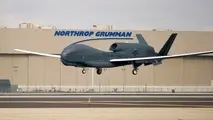Northrop Grumman completes test flights for new AESA sensor
Programme officials at Northrop Grumman have completed the first test flights of a fully digital active electronically scanned array (AESA) sensor, whose technology is based on a Defense Advanced Research Projects Agency (DARPA) pathfinder initiative.

Programme officials at Northrop Grumman have completed the first test flights of a fully digital active electronically scanned array (AESA) sensor, whose technology is based on a Defense Advanced Research Projects Agency (DARPA) pathfinder initiative.
The inaugural test flights of the Electronically Scanned Multifunction Reconfigurable Integrated Sensor (EMRIS), carried out in conjunction with “government partners” in August, represented the “next stage of technology maturation for EMRIS”, according to a company statement.
“Dozens of successful flights with EMRIS demonstrated the ability to … utilise digital engineering and advancements in microelectronics to provide agile capabilities for both crewed and uncrewed platforms,” Krys Moen, vice-president of advanced mission capabilities at Northrop Grumman, said in a statement.
During the flights, programme officials were able to integrate and operate “third-party” applications and carry out rapid software updates mid-flight via the platform's open architecture software, according to the statement.
The flight demonstrations signalled the sensor's ability to quickly integrate “technologies developed for other programmes to adapt multiple fielded capabilities” into the EMRIS, Northrop Grumman officials added in the statement. Programme leaders with the company or DARPA did not provide specifics on what technologies were folded into the EMRIS software during the live-flight drills.
Considering the fully digital nature of the AESA utilised in the EMRIS, the system is capable of executing several different mission sets – from radar and communications capabilities to electronic warfare (EW) operations – from a single platform. The key to this multifunction capability within the EMRIS is the digital AESA's ability to consolidate disparate aperture functions into a single sensor unit. As a result, “sophisticated multifunction apertures like EMRIS can deploy several functions simultaneously”, programme officials said in the August statement.

